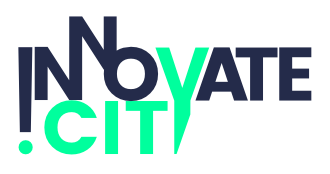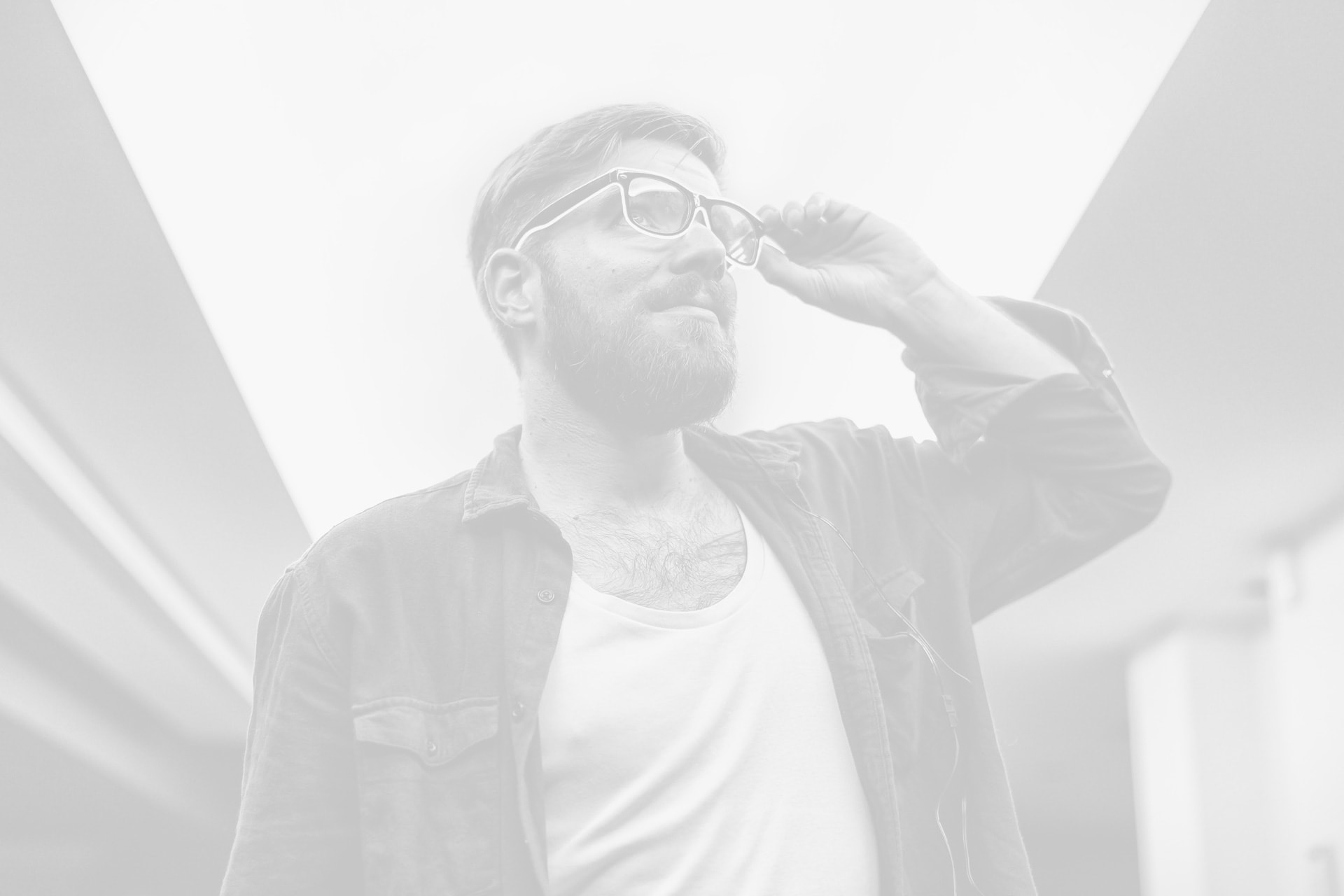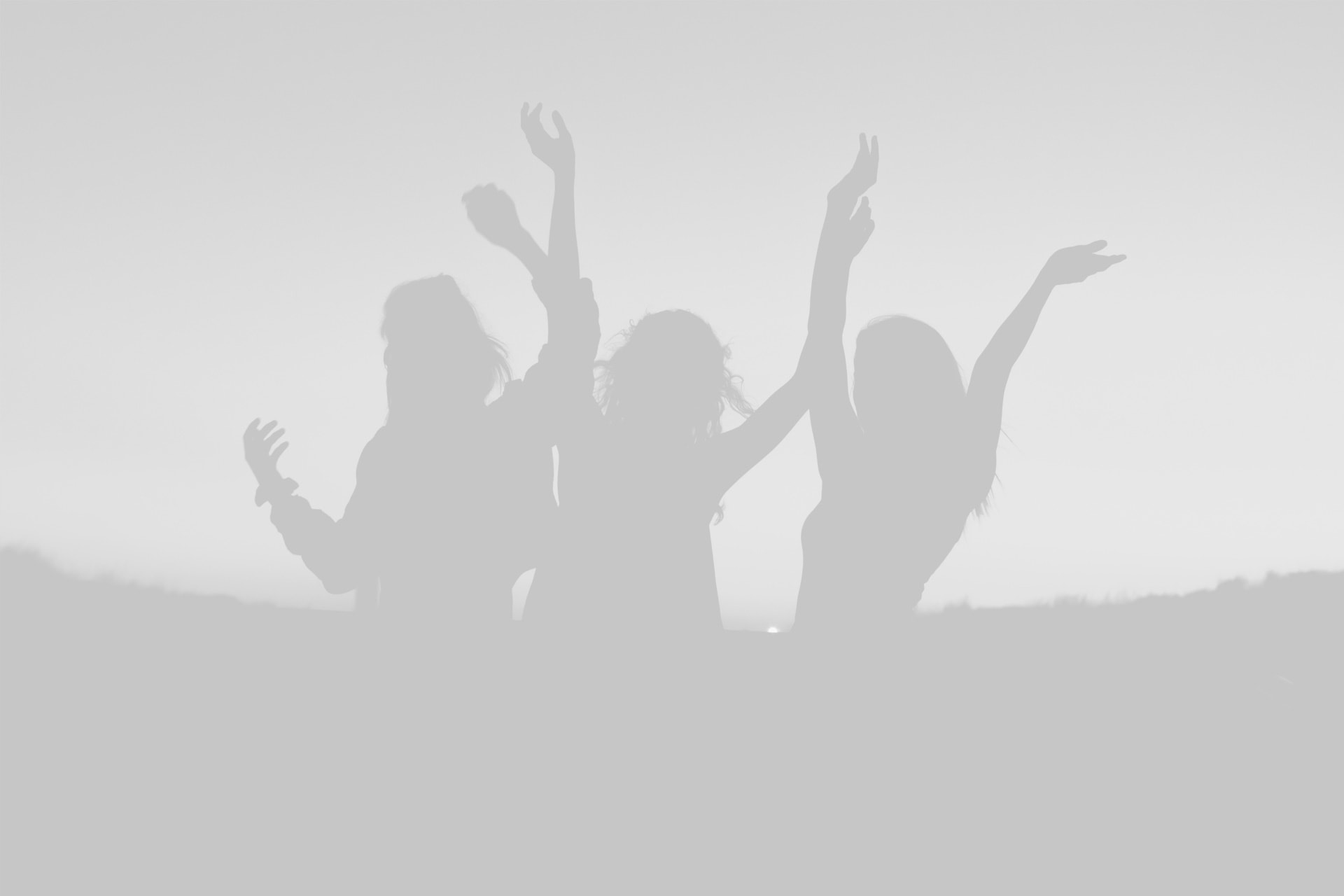STEP 1 – Future Building Ecosystem
Join the FBE (Future Building Ecosystem). A global taskforce to a sustainable transition.
From the pandemic, cities have perceived they all face similar problems, and people have taken the initiative to be part of the solution in collaborative portals and initiatives like EUvsVIrus Hackathon that was the world’s largest-ever organised.
The ‘next normality’ means taking advantages from this mindset. Resilience doesn’t mean to be prepared for anything. This recent pandemic has demonstrated we are never prepared for everything. Resilience means that the community is ready to join forces to deal with any unexpected situation co-creating the solution. It is about the process, not the result.
It is part of the local government’s mission to lead this paradigm shift via developing the Future Building Ecosystem and bringing together all the stakeholders (governments, academia, business and citizens) to co-create innovative solution using the Open Innovation 2.0 model.
The starting point is to have a team from local governance that will manage the governmental approach to the city sustainable development. A team that launch city missions and manage other stakeholder’s mission approaches by organising co-creation sessions using Innovate.city’ sustainable innovation canvas.
Why is FBE so critical for future development?
The Bank of America has announced that there will be a new world order after the pandemic. The world economic forum has alerted to the fact that if we get our policy responses to COVID-19 wrong, we risk exacerbating the climate crisis. But it also provides us with a massive opportunity to build back better. EU has pointed the way with the Green Deal!
Cities and countries are facing a critical crossroad: from one side is the economic recovery at all cost (at the expense of the planet and future generations), on the other side a new paradigm based on sustainable development.
The same way cities developed reaction forces to deal with an emergency; it is now vital to create a Future Building Ecosystem (FBE) to manage the ‘next normal’ sustainably!
We, at the European Network of City Policy Labs, believe the only efficient way to address the future challenges is to create and train a local team to start a consistent model of co-creation. We call those teams FBE – Future Building Ecosystem.
The city will develop a Smart City Office focused on creating a progress upward spiral by converging into one unique location with all the instruments for thriving their local economy.
In this Future City Office, the FBE team will develop the city’s master plan and its correlated missions.
Mission approaches are organized and coordinated by the FBE using the Sustainable Innovation Canvas to support the co-creation of innovation (IO2.0 model) by the stakeholders: local Government, private sector, academia and citizens.
For each Mission Approach, the City Policy Lab develops a favourable regulatory framework using sandboxes whenever needed.
The Living Lab will coordinate the phases from co-creation to experimentation and learning.
The successful Mission Approaches are incubated in the city’s incubator, also part of the Future City Office.
Innovate.city will work in replicating successful implementations in the city by accelerating the solution across the European Network of City Policy Labs.
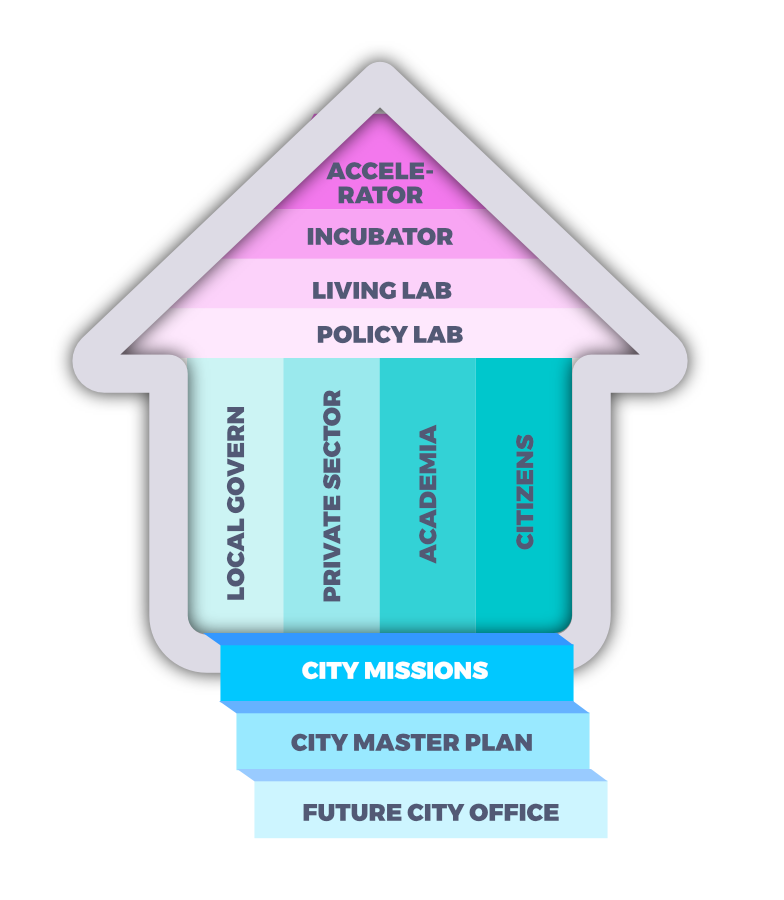
Start now an FBE in your city!
If you are part of any local government contact us and we will guide you on the process. If you want your city to develop an FBE, sign up now, and we’ll help you make it happen!
Inspired by clouds
Take your time.
I’ve got a Fujifilm X100s. It runs about $1300. It’s easily the best camera I’ve ever owned. I take care of it as best as I can, but I don’t let taking care of it impact the photography. Let me elaborate on that a bit better. You’ll get better at each section of what we talked about slowly. And while you do, you’ll be amazed at how much easier it all is and how the habit forms. The best way to get better at photography is start by taking your camera everywhere. If you leave your house, your camera leaves with you. The only exception is if you’re planning for a weekend bender — then probably leave it at home. Other than that, always have it slung over your shoulder. It would probably help to get an extra battery to carry in your pocket. I’ve got three batteries. One in my camera, one in my pocket, one in the charger.
When it dies, swap them all.
For me, the most important part of improving at photography has been sharing it. Sign up for an Exposure account, or post regularly to Tumblr, or both. Tell people you’re trying to get better at photography. Talk about it. When you talk about it, other people get excited about it. They’ll come on photo walks with you. They’ll pose for portraits. They’ll buy your prints, zines, whatever.
Clouds come floating into my life, no longer to carry rain or usher storm, but to add color to my sunset sky.
— Rabindranath Tagore
Breathe the world.
I’ve got a Fujifilm X100s. It runs about $1300. It’s easily the best camera I’ve ever owned. I take care of it as best as I can, but I don’t let taking care of it impact the photography. Let me elaborate on that a bit better. You’ll get better at each section of what we talked about slowly. And while you do, you’ll be amazed at how much easier it all is and how the habit forms. The best way to get better at photography is start by taking your camera everywhere. If you leave your house, your camera leaves with you. The only exception is if you’re planning for a weekend bender — then probably leave it at home. Other than that, always have it slung over your shoulder. It would probably help to get an extra battery to carry in your pocket. I’ve got three batteries. One in my camera, one in my pocket, one in the charger. When it dies, swap them all.
For me, the most important part of improving at photography has been sharing it. Sign up for an Exposure account, or post regularly to Tumblr, or both. Tell people you’re trying to get better at photography. Talk about it. When you talk about it, other people get excited about it. They’ll come on photo walks with you. They’ll pose for portraits. They’ll buy your prints, zines, whatever.
Heavy hearts, like heavy clouds in the sky, are best relieved by the letting of a little water.
— Christopher Morley
Enjoy the morning.
The best way to get better at photography is start by taking your camera everywhere. If you leave your house, your camera leaves with you. The only exception is if you’re planning for a weekend bender — then probably leave it at home. Other than that, always have it slung over your shoulder. It would probably help to get an extra battery to carry in your pocket. I’ve got three batteries. One in my camera, one in my pocket, one in the charger. When it dies, swap them all.
For me, the most important part of improving at photography has been sharing it. Sign up for an Exposure account, or post regularly to Tumblr, or both. Tell people you’re trying to get better at photography. Talk about it. When you talk about it, other people get excited about it. They’ll come on photo walks with you. They’ll pose for portraits. They’ll buy your prints, zines, whatever. I’ve got a Fujifilm X100s. It runs about $1300.
It’s easily the best camera I’ve ever owned. I take care of it as best as I can, but I don’t let taking care of it impact the photography. Let me elaborate on that a bit better. You’ll get better at each section of what we talked about slowly. And while you do, you’ll be amazed at how much easier it all is and how the habit forms.
There are no rules of architecture for a castle in the clouds and this is real.
— Gilbert K. Chesterton
Free your mind.
The best way to get better at photography is start by taking your camera everywhere. If you leave your house, your camera leaves with you. The only exception is if you’re planning for a weekend bender — then probably leave it at home. Other than that, always have it slung over your shoulder. It would probably help to get an extra battery to carry in your pocket. I’ve got three batteries. One in my camera, one in my pocket, one in the charger. When it dies, swap them all.
I’ve got a Fujifilm X100s. It runs about $1300. It’s easily the best camera I’ve ever owned. I take care of it as best as I can, but I don’t let taking care of it impact the photography. Let me elaborate on that a bit better. You’ll get better at each section of what we talked about slowly. And while you do, you’ll be amazed at how much easier it all is and how the habit forms.
For me, the most important part of improving at photography has been sharing it. Sign up for an Exposure account, or post regularly to Tumblr, or both. Tell people you’re trying to get better at photography. Talk about it. When you talk about it, other people get excited about it. They’ll come on photo walks with you. They’ll pose for portraits. They’ll buy your prints, zines, whatever.
Photography is better shared.
Make it clean and simple
Create your header preset in just few clicks.
Just the other day I happened to wake up early. That is unusual for an engineering student. After a long time I could witness the sunrise. I could feel the sun rays falling on my body. Usual morning is followed by hustle to make it to college on time. This morning was just another morning yet seemed different.
Witnessing calm and quiet atmosphere, clear and fresh air seemed like a miracle to me. I wanted this time to last longer since I was not sure if I would be able to witness it again, knowing my habit of succumbing to schedule. There was this unusual serenity that comforted my mind. It dawned on me, how distant I had been from nature. Standing near the compound’s gate, feeling the moistness that the air carried, I thought about my life so far.
This is what has happened to us. We want the things we have been doing forcefully to fail. And then maybe people around us would let us try something else or our dreams. We are accustomed to live by everyone else’s definition of success. We punish people for the things they are passionate about, just because we were unable to do the same at some point in our life.
I was good at academics, so decisions of my life had been pretty simple and straight. Being pretty confident I would make it to the best junior college of my town in the first round itself, never made me consider any other option. I loved psychology since childhood, but engineering was the safest option. Being born in a middle class family, thinking of risking your career to make it to medical field was not sane. I grew up hearing ‘Only doctor’s children can afford that field’ and finally ended up believing it. No one around me believed in taking risks. Everyone worshiped security. I grew up doing the same.
Control fonts, background, size, parallax and overlay...
‘Being in the top will only grant you a good life’ has been the mantra of my life. But at times, I wish I was an average student. I wish decisions would have not been so straightforward. Maybe I would have played cricket- the only thing I feel passionate about. Or maybe I would have studied literature (literature drives me crazy). Isn’t that disappointing- me wishing to be bad at academics. It’s like at times I hate myself for the stuff I am good at.
I feel like these concrete buildings have sucked our desires and our dreams. We are so used to comfort that compromise seems like a taboo. We have lost faith in ourselves. If we can make through it right now, we can do the same in the days to come. You only need a desire to survive and nothing more- not money or cars or designer clothes.
Staying locked up in four walls have restricted our thinking. I feel like our limited thinking echoes through this wall. We are so used to schedules and predictable life that we have successfully suppressed our creative side.
When you step out of these four walls on a peaceful morning, you realize how much nature has to offer to you. Its boundless. Your thoughts, worries, deadlines won’t resonate here. Everything will flow away along with the wind. And you will realize every answer you had been looking for, was always known to you.
It would mean a lot to me if you recommend this article and help me improve. I would love to know your thoughts!
Time is passing by
CSS selectors all exist within the same global scope. Anyone who has worked with CSS long enough has had to come to terms with its aggressively global nature — a model clearly designed in the age of documents, now struggling to offer a sane working environment for today’s modern web applications. Every selector has the potential to have unintended side effects by targeting unwanted elements or clashing with other selectors. More surprisingly, our selectors may even lose out in the global specificity war, ultimately having little or no effect on the page at all.
Any time we make a change to a CSS file, we need to carefully consider the global environment in which our styles will sit. No other front end technology requires so much discipline just to keep the code at a minimum level of maintainability. But it doesn’t have to be this way. It’s time to leave the era of global style sheets behind.
It’s time for local CSS.
In other languages, it’s accepted that modifying the global environment is something to be done rarely, if ever.
In the JavaScript community, thanks to tools like Browserify, Webpack and JSPM, it’s now expected that our code will consist of small modules, each encapsulating their explicit dependencies, exporting a minimal API.
Yet, somehow, CSS still seems to be getting a free pass.
Many of us — myself included, until recently — have been working with CSS so long that we don’t see the lack of local scope as a problem that we can solve without significant help from browser vendors. Even then, we’d still need to wait for the majority of our users to be using a browser with proper Shadow DOM support.
We’ve worked around the issues of global scope with a series of naming conventions like OOCSS, SMACSS, BEM and SUIT, each providing a way for us to avoid naming collisions and emulate sane scoping rules.
We no longer need to add lengthy prefixes to all of our selectors to simulate scoping. More components could define their own foo and bar identifiers which — unlike the traditional global selector model—wouldn’t produce any naming collisions.
import styles from './MyComponent.css';
import React, { Component } from 'react';
export default class MyComponent extends Component {
render() {
return (
<div>
<div className={styles.foo}>Foo</div>
<div className={styles.bar}>Bar</div>
</div>
);
}
The benefits of global CSS — style re-use between components via utility classes, etc. — are still achievable with this model. The key difference is that, just like when we work in other technologies, we need to explicitly import the classes that we depend on. Our code can’t make many, if any, assumptions about the global environment.
Writing maintainable CSS is now encouraged, not by careful adherence to a naming convention, but by style encapsulation during development.
Once you’ve tried working with local CSS, there’s really no going back. Experiencing true local scope in our style sheets — in a way that works across all browsers— is not something to be easily ignored.
Introducing local scope has had a significant ripple effect on how we approach our CSS. Naming conventions, patterns of re-use, and the potential extraction of styles into separate packages are all directly affected by this shift, and we’re only at the beginning of this new era of local CSS.
process.env.NODE_ENV === 'development' ?
'[name]__[local]___[hash:base64:5]' :
'[hash:base64:5]'
)
Understanding the ramifications of this shift is something that we’re still working through. With your valuable input and experimentation, I’m hoping that this is a conversation we can have together as a larger community.
Note: Automatically optimising style re-use between components would be an amazing step forward, but it definitely requires help from people a lot smarter than me.
Sounds from the streets
Many years ago, I worked for my parents who own a video production company. Because it is a family business, you inevitably end up wearing many hats and being the czar of many different jobs. I mainly managed projects and worked as a video editor. On production, there were times that I was called on to work as an audio tech and was made to wear headphones on long production days. In those days, having a really good set of headphones that picked up every nuance of sound was essential to making sure the client got what they needed.
It’s safe to say that because of my unique professional experiences, I’ve tested out a lot of headphones.
First impressions.
Naturally, my first impression of these headphones is based off of the look of them. They have a classic over-the-ear style that is highlighted by a blue LED light that indicates the power for the noise canceling. The padding on the ear pieces seems adequate for extended usage periods.
They are wired headphones, but the 3.5mm stereo mini-plug cable is detachable. Something else I noticed right of the bat was the very nice carrying case that comes with them. It has a hard plastic exterior with a soft cloth interior that helps to protect the surface of the headphones from scratches. I never truly appreciated cases for headphones until I started carrying them from place-to-place. Now I can’t imagine not having a case.
A perfect fit.
Once I gave the headphones a thorough once-over exam, I tried them on. As I mentioned, they have a classic over-the-ear style and just looking at them, the padding on the ear pieces seem adequate and the peak of the headband seemed to be a bit lacking, but you don’t really know comfort unless you try on the product. So, I slipped the headphones on and found them to be exquisitely comfortable.
Quality.
Now that I had the headphones on my head, I was finally ready to plug and play some music. I plugged the provided cable into the jack on the headphones and then the one on my iPhone 6. Then I called up Pandora. I tend to have a very eclectic music purview and have many stations set up for different moods. From John Williams to Fallout Boy, the sound quality of these headphones was remarkable. There is an amazing depth of sound and incredible highs and lows that make listening to music a truly breathtaking experience.
In order to test how voices sounded, and the overall art of sound mixing, I pulled up Netflix on my iPad Air 2 and watched a few minutes of a movie to hear all the nuances of the film. None of them were lost. In fact, I ended up hearing sounds that I hadn’t heard before. Echoes…birds chirping…wind blowing through trees…breathing of the characters…it was very impressive what the headphones ended up bringing out for me.
I would highly recommend these to any sound mixing specialist.
Working from your home?
01. Wake up at the same time every day.
Naturally, my first impression of these headphones is based off of the look of them. They have a classic over-the-ear style that is highlighted by a blue LED light that indicates the power for the noise canceling. The padding on the ear pieces seems adequate for extended usage periods.
They are wired headphones, but the 3.5mm stereo mini-plug cable is detachable. Something else I noticed right of the bat was the very nice carrying case that comes with them. It has a hard plastic exterior with a soft cloth interior that helps to protect the surface of the headphones from scratches. I never truly appreciated cases for headphones until I started carrying them from place-to-place. Now I can’t imagine not having a case.
It’s funny — the thing I feared would take away my “freedom” is the one thing that has allowed me to have it.
Joelle Steiniger
02. Have a routine when you wake up.
Once I gave the headphones a thorough once-over exam, I tried them on. As I mentioned, they have a classic over-the-ear style and just looking at them, the padding on the ear pieces seem adequate and the peak of the headband seemed to be a bit lacking, but you don’t really know comfort unless you try on the product. So, I slipped the headphones on and found them to be exquisitely comfortable. In order to test how voices sounded, and the overall art of sound mixing, I pulled up Netflix on my iPad Air 2 and watched a few minutes of a movie to hear all the nuances of the film. None of them were lost. In fact, I ended up hearing sounds that I hadn’t heard before. Echoes…birds chirping…wind blowing through trees…breathing of the characters…it was very impressive what the headphones ended up bringing out for me.

I’d start my day by checking email, Twitter, Facebook. Reading the “news”. I’d look at my to-do list and start working on something.
03. Plan your workout time — stick to it.
Now that I had the headphones on my head, I was finally ready to plug and play some music. I plugged the provided cable into the jack on the headphones and then the one on my iPhone 6. Then I called up Pandora. I tend to have a very eclectic music purview and have many stations set up for different moods. From John Williams to Fallout Boy, the sound quality of these headphones was remarkable. There is an amazing depth of sound and incredible highs and lows that make listening to music a truly breathtaking experience.
In order to test how voices sounded, and the overall art of sound mixing, I pulled up Netflix on my iPad Air 2 and watched a few minutes of a movie to hear all the nuances of the film. None of them were lost. In fact, I ended up hearing sounds that I hadn’t heard before. Echoes…birds chirping…wind blowing through trees…breathing of the characters…it was very impressive what the headphones ended up bringing out for me.
Distractions aside, there was no real rhyme or reason to my workflow. The not-so-fun (but necessary) stuff kept getting neglected.
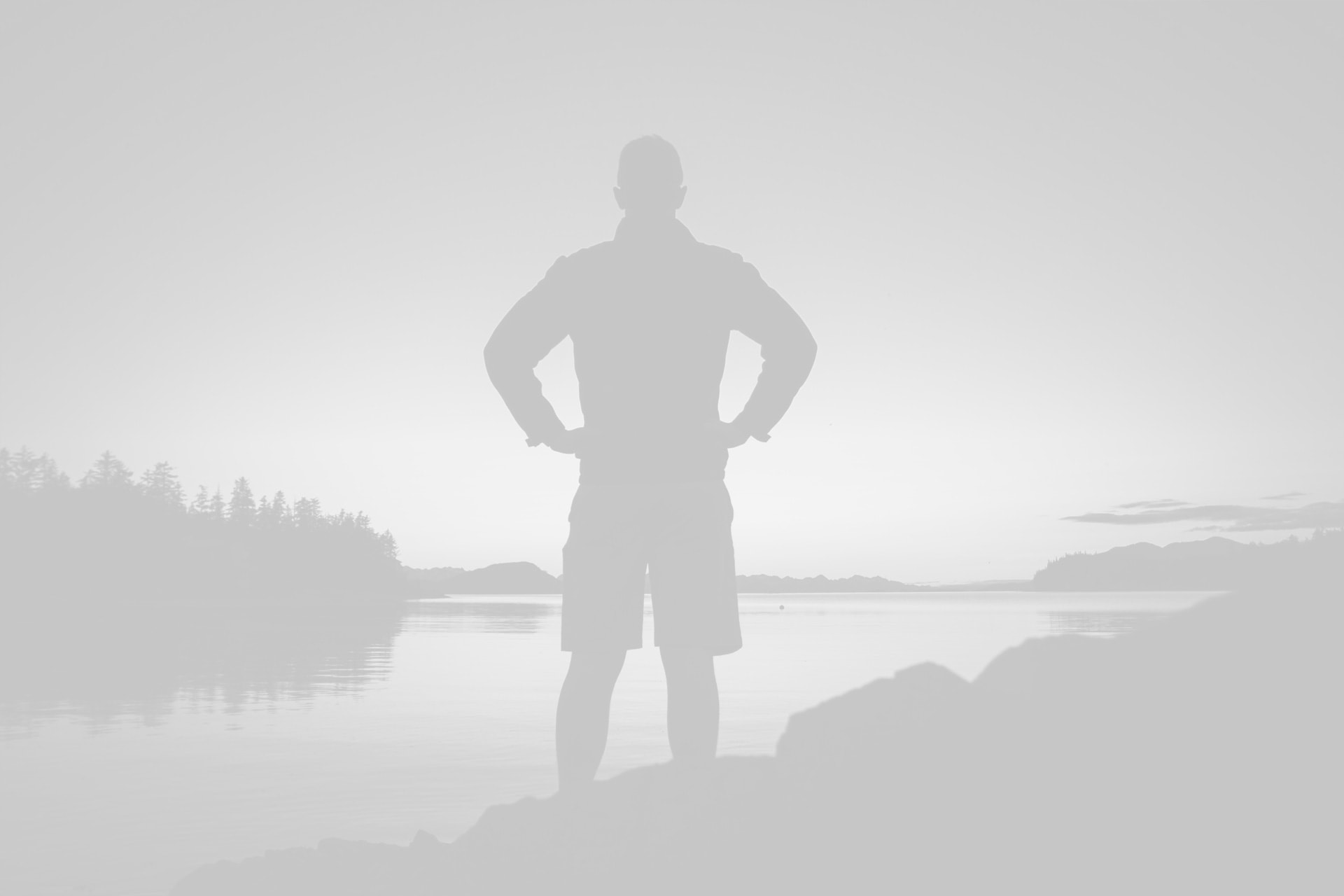
04. Call it a night.
Now that I had the headphones on my head, I was finally ready to plug and play some music. I plugged the provided cable into the jack on the headphones and then the one on my iPhone 6. Then I called up Pandora. I tend to have a very eclectic music purview and have many stations set up for different moods. From John Williams to Fallout Boy, the sound quality of these headphones was remarkable. There is an amazing depth of sound and incredible highs and lows that make listening to music a truly breathtaking experience.
In order to test how voices sounded, and the overall art of sound mixing, I pulled up Netflix on my iPad Air 2 and watched a few minutes of a movie to hear all the nuances of the film. None of them were lost. In fact, I ended up hearing sounds that I hadn’t heard before. Echoes…birds chirping…wind blowing through trees…breathing of the characters…it was very impressive what the headphones ended up bringing out for me.

STEP 1 – Future Building Ecosystem
Join the FBE (Future Building Ecosystem). A global taskforce to a sustainable transition.
From the pandemic, cities have perceived they all face similar problems, and people have taken the initiative to be part of the solution in collaborative portals and initiatives like EUvsVIrus Hackathon that was the world’s largest-ever organised.
The ‘next normality’ means taking advantages from this mindset. Resilience doesn’t mean to be prepared for anything. This recent pandemic has demonstrated we are never prepared for everything. Resilience means that the community is ready to join forces to deal with any unexpected situation co-creating the solution. It is about the process, not the result.
It is part of the local government’s mission to lead this paradigm shift via developing the Future Building Ecosystem and bringing together all the stakeholders (governments, academia, business and citizens) to co-create innovative solution using the Open Innovation 2.0 model.
The starting point is to have a team from local governance that will manage the governmental approach to the city sustainable development. A team that launch city missions and manage other stakeholder’s mission approaches by organising co-creation sessions using Innovate.city’ sustainable innovation canvas.
Why is FBE so critical for future development?
The Bank of America has announced that there will be a new world order after the pandemic. The world economic forum has alerted to the fact that if we get our policy responses to COVID-19 wrong, we risk exacerbating the climate crisis. But it also provides us with a massive opportunity to build back better. EU has pointed the way with the Green Deal!
Cities and countries are facing a critical crossroad: from one side is the economic recovery at all cost (at the expense of the planet and future generations), on the other side a new paradigm based on sustainable development.
The same way cities developed reaction forces to deal with an emergency; it is now vital to create a Future Building Ecosystem (FBE) to manage the ‘next normal’ sustainably!
We, at the European Network of City Policy Labs, believe the only efficient way to address the future challenges is to create and train a local team to start a consistent model of co-creation. We call those teams FBE – Future Building Ecosystem.
Start now an FBE in your city!
If you are part of any local government contact us and we will guide you on the process. If you want your city to develop an FBE, sign up now, and we’ll help you make it happen!
